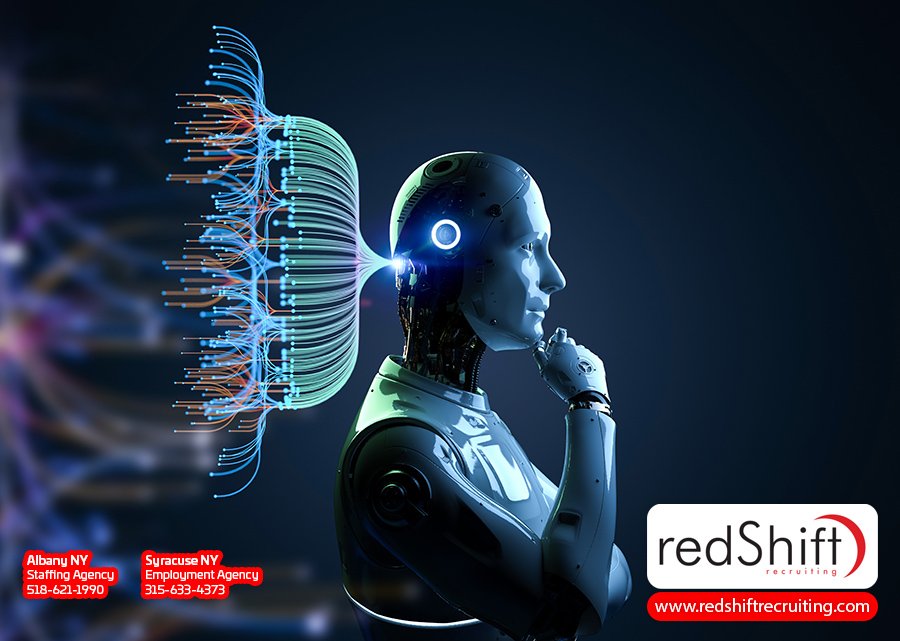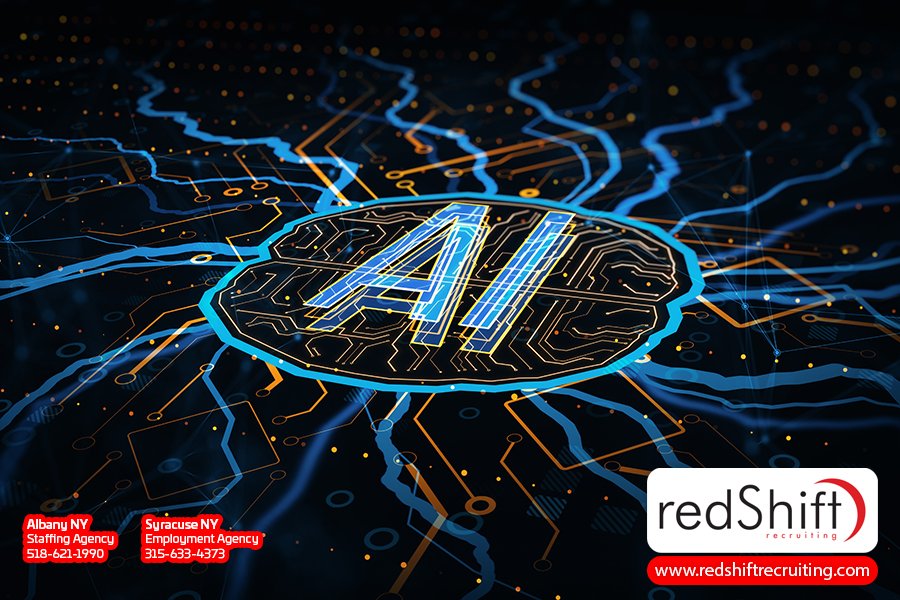
Autonomous Vehicles: Navigating Legal And Ethical Challenges
Introduction
Are you ready for the future of transportation? Autonomous vehicles, also known as self-driving cars, are revolutionizing the way we travel. With advances in artificial intelligence and machine learning, these vehicles have the potential to greatly improve road safety and efficiency.
However, along with their promising benefits come a host of legal and ethical challenges that need to be navigated.
In this article, we will explore the legal and ethical landscape surrounding autonomous vehicles. From understanding the complex legal frameworks that govern their operation to grappling with difficult ethical dilemmas, we will delve into the intricacies of this emerging technology.
By examining current regulations and exploring potential solutions, we aim to shed light on how society can effectively navigate these challenges while embracing the exciting possibilities autonomous vehicles offer.
So buckle up as we embark on a journey through the legal and ethical terrain of autonomous vehicles!Imagine yourself stepping into a world where driverless cars roam the streets, effortlessly navigating their way through traffic and avoiding hazards with the help of advanced AI and ML technologies.
These autonomous vehicles, also known as self-driving cars or autonomous cars, are equipped with an advanced driver assistance system that allows them to operate without the need for human intervention. They rely on a combination of sensors, cameras, radar systems, and machine learning algorithms to perceive their surroundings and make decisions in real-time.
Autonomous driving technology has the potential to revolutionize transportation by improving road safety, reducing traffic congestion, and enhancing overall efficiency. However, it also brings forth a host of legal and ethical challenges that need to be addressed.
One of the key concerns is determining liability in the event of accidents involving autonomous vehicles. Who should be held responsible—the manufacturer of the autonomous car or the human driver who may be present but not actively engaged in driving tasks? Additionally, there are questions regarding data privacy and cybersecurity as these vehicles collect vast amounts of data about their passengers' whereabouts and behaviors.
Balancing technological advancements with ethical considerations will be crucial as we navigate this new era of autonomous driving.
Understanding Image Recognition
Explore the fascinating world of Image Recognition and uncover how it operates, allowing you to effortlessly identify objects and patterns in images.
Image Recognition is a branch of artificial intelligence that utilizes deep learning techniques, specifically neural networks, to analyze and interpret visual data. By employing machine learning algorithms and supervised learning, Image Recognition systems are trained on vast amounts of labeled images to recognize specific objects or patterns.
These systems consist of multiple hidden layers within deep networks, which enable them to learn complex features and extract meaningful representations from images.
Deep learning plays a crucial role in improving Image Recognition by enhancing the accuracy and efficiency of the process. With their ability to automatically learn hierarchical representations from raw data, deep learning algorithms have revolutionized the field of computer vision.
Neural networks used in image recognition tasks are trained on massive datasets containing millions of labeled images. Through this training process, the networks can discern intricate details and subtle variations within images that may not be easily distinguishable by human eyes.
In real-world applications such as autonomous vehicles, Image Recognition is utilized to identify traffic signs, pedestrians, and other vehicles on the road. By leveraging deep learning techniques like neural networks coupled with object detection algorithms, these vehicles can perceive their surroundings accurately and make informed decisions accordingly.
This technology ensures safer navigation by alerting drivers or even taking autonomous actions based on what it recognizes in real-time scenarios. In combination with natural language processing for interpreting traffic control signals or understanding voice commands from passengers, Image Recognition brings us one step closer to achieving fully autonomous driving capabilities while ensuring optimal safety standards are met.Imagine yourself stepping into a world where driverless cars roam the streets, effortlessly navigating their way through traffic and avoiding hazards with the help of advanced AI and ML technologies.
These autonomous vehicles, also known as self-driving cars or autonomous cars, are equipped with an advanced driver assistance system that allows them to operate without the need for human intervention. They rely on a combination of sensors, cameras, radar systems, and machine learning algorithms to perceive their surroundings and make decisions in real-time.
Autonomous driving technology has the potential to revolutionize transportation by improving road safety, reducing traffic congestion, and enhancing overall efficiency. However, it also brings forth a host of legal and ethical challenges that need to be addressed.
One of the key concerns is determining liability in the event of accidents involving autonomous vehicles. Who should be held responsible—the manufacturer of the autonomous car or the human driver who may be present but not actively engaged in driving tasks? Additionally, there are questions regarding data privacy and cybersecurity as these vehicles collect vast amounts of data about their passengers' whereabouts and behaviors.
Balancing technological advancements with ethical considerations will be crucial as we navigate this new era of autonomous driving.
Autonomous Vehicles and AI/ML
With the advancement of AI and ML technologies, decision trees, neural networks, and reinforcement learning have revolutionized the way vehicles operate and make decisions on the road. These cutting-edge technologies enable autonomous vehicles to navigate through complex traffic situations and respond to various scenarios in real-time.
One notable development is the use of image recognition technology, which allows self-driving cars to detect and react to objects in their surroundings up to 10 times faster than human drivers. This remarkable speed provides a significant advantage when it comes to avoiding potential accidents or hazards on the road.
However, as autonomous vehicles continue to evolve, legal and ethical challenges arise. One major concern is determining the appropriate level of human intervention required in driving automation systems. While some argue for complete reliance on AI or ML algorithms without any human involvement, others advocate for maintaining a certain degree of control by allowing human drivers to override or intervene in critical situations.
Striking a balance between fully autonomous driving systems and ensuring driver accountability becomes crucial from both legal and ethical perspectives. Regulatory bodies like the National Highway Traffic Safety Administration (NHTSA) are actively working towards establishing guidelines that address these concerns while promoting safe vehicle automation practices.
As AI and ML technologies advance further, addressing these legal and ethical challenges will be essential for realizing the full potential benefits of autonomous vehicles while ensuring public safety on our roads.
Legal Challenges
As AI and ML technologies continue to advance, there's an increasing need to address the complex legal landscape surrounding autonomous vehicle regulations and liability determinations in accident scenarios.
The rapid development of autonomous vehicle technology has sparked a global conversation about how to regulate and govern these vehicles on public roads.
Currently, there's a significant disparity in regulations across different countries and regions, which poses challenges for manufacturers looking to deploy their automated vehicles worldwide.
One of the main legal challenges arises from determining liability in accident scenarios involving autonomous vehicles. With traditional human-driven cars, liability is often attributed to the driver's actions or negligence. However, as self-driving cars rely on sophisticated algorithms and sensors, it becomes more challenging to assign blame when accidents occur.
In such cases, questions arise about whether the responsibility lies with the vehicle manufacturer, software developer, or even the car owner or operator. This complexity complicates insurance claims and can lead to lengthy legal battles.
Furthermore, ethical challenges also emerge in this context. Autonomous vehicles have the potential to greatly reduce traffic congestion by optimizing routes and reacting faster than human drivers to changes such as traffic lights or accidents. However, fully autonomous vehicles may encounter situations where they must make split-second decisions that could result in harm or the loss of life.
Determining how these decisions should be programmed ethically adds another layer of complexity for legislators and developers alike.
While autonomous vehicle technology offers promising solutions for improving road safety and reducing traffic congestion caused by human error, it also presents significant legal and ethical challenges that must be carefully addressed.
Harmonizing global regulations regarding autonomous vehicle usage will be crucial for fostering innovation while ensuring public safety.
Additionally, establishing clear guidelines for liability determination and addressing ethical dilemmas will help pave the way towards a future where self-driving cars can coexist responsibly with human drivers on our roads.
Ethical Challenges
To properly address the ethical dilemmas posed by self-driving cars, you must carefully consider the potential biases embedded within their decision-making algorithms. Autonomous vehicles rely on complex algorithms to make split-second decisions while navigating the roads. However, these algorithms are created by humans and can unintentionally perpetuate biases.
For example, if a self-driving car is programmed to prioritize pedestrian safety above all else, it may excessively brake or swerve to avoid pedestrians even when there is minimal risk of collision. This could potentially disrupt the flow of traffic and cause accidents.
In order to navigate these ethical challenges, it's crucial for the automotive industry and regulatory bodies like the National Highway Traffic Safety Administration (NHTSA) to develop guidelines that address bias in automated driving systems. Here are three key considerations:
1. Transparency: The development process of autonomous vehicles should be transparent and accountable. It should be clear how decisions are made and what factors are taken into account by the algorithms. By ensuring transparency, we can identify and mitigate any potential biases that may arise.
2. Data Collection: Self-driving cars rely heavily on data collection to learn from real-world scenarios. It's important to ensure that this data collection process is diverse and representative of different demographics, road conditions, and driving scenarios. By collecting a wide range of data, we can minimize biases in decision-making algorithms.
3. Ethical Frameworks: Developing an ethical framework for self-driving cars is essential to addressing ethical challenges. This framework should include principles such as prioritizing human life over property damage, promoting fairness in decision-making processes, and considering societal values when making difficult choices on the road.
By taking these steps to address potential biases within autonomous vehicles' decision-making algorithms, we can ensure that self-driving technology operates ethically while minimizing harm and maximizing safety for all road users.
Future Pathways and Solutions
Imagine a future where bias-free AI systems pave the way for safer and more inclusive transportation options. As automated driving technology continues to advance, it's crucial to address the legal and ethical challenges that arise with the deployment of fully autonomous vehicles.
Future pathways and solutions must prioritize safety, efficacy, and ethics to build public trust and ensure a smooth transition towards a driverless future.
One of the key aspects to consider is the role of safety drivers. These individuals play a critical role in monitoring autonomous systems during testing phases, but as technology evolves, their responsibilities may change. Transition plans should include re-skilling programs for safety drivers so they can adapt to new roles or industries as automation becomes more prevalent.
Ongoing research is essential for developing robust safety measures that can detect potential malfunctions or system failures in real-time. This will enhance the overall safety of self-driving vehicles and provide valuable insights into improving driving automation technologies.
Collaboration between policymakers, industry leaders, and researchers is vital in shaping regulatory frameworks that govern the deployment of fully autonomous cars on public roads. Proposing potential legislative changes that address liability concerns, data privacy issues, and ethical considerations will help establish clear guidelines for manufacturers and operators alike.
By emphasizing the need for ongoing research on safety, efficacy, and ethics in driving automation systems, we can ensure that these technologies are developed responsibly with public welfare as a top priority.
Ultimately, by navigating legal and ethical challenges through forward-thinking solutions, we can unlock the full potential of autonomous vehicles while creating an inclusive transportation ecosystem where everyone feels safe and valued.
Conclusion
Now that we've explored the future pathways and potential solutions for autonomous vehicles, it's clear that there are still significant legal and ethical challenges to navigate. However, despite these challenges, the transformative potential of autonomous vehicles can't be ignored.
1. Safety: One of the key advantages of autonomous vehicles is their ability to enhance road safety by reducing human error. Advanced driver assistance systems such as adaptive cruise control, electronic stability control, and automated lane-keeping systems can help prevent accidents and save lives.
2. Efficiency: Autonomous vehicles have the potential to greatly improve traffic flow and reduce congestion on our roads. With their ability to communicate with each other and optimize routes in real-time, they can lead to more efficient transportation networks.
3. Accessibility: Driverless cars can revolutionize transportation for individuals who aren't able to drive due to disabilities or age-related issues. They offer increased mobility options and independence for those who may otherwise rely on public transportation or assistance from others.
While there are legal and ethical challenges surrounding the deployment of autonomous vehicles, it's crucial that we engage in continuous dialogue and informed policy-making to ensure their responsible deployment. The transformative potential of these vehicles in terms of safety, efficiency, and accessibility can't be overstated.
It's essential that we embrace this technology while addressing concerns regarding privacy, liability, cybersecurity, and societal impact through thoughtful regulation and collaboration between industry stakeholders, policymakers, and researchers. By doing so, we can pave the way for a future where autonomous vehicles coexist harmoniously with traditional modes of transportation for the benefit of all individuals on our roads.
Frequently Asked Questions
What are the potential economic impacts of autonomous vehicles on various industries?
The potential economic impacts of autonomous vehicles on various industries are vast. In the transportation sector, for instance, autonomous vehicles could lead to a reduction in labor costs as there wouldn't be a need for human drivers. This could also result in increased efficiency and lower operating expenses for companies involved in logistics and delivery services.
Additionally, the automotive industry itself may experience significant changes, with a shift towards more shared mobility and subscription-based models rather than individual car ownership.
Moreover, industries such as insurance, healthcare, and retail could see both positive and negative effects. On one hand, the decrease in accidents caused by human error may reduce insurance premiums and healthcare costs. On the other hand, traditional brick-and-mortar retailers might face challenges as people may prefer to shop online while being transported by autonomous vehicles.
Overall, while there will undoubtedly be winners and losers across industries, the widespread adoption of autonomous vehicles has the potential to reshape our economy in profound ways.
How do autonomous vehicles handle unexpected situations on the road, such as road construction or accidents?
When it comes to unexpected situations on the road, such as road construction or accidents, autonomous vehicles are designed to handle them with advanced sensors and algorithms. These vehicles have the ability to detect and analyze their surroundings in real-time, allowing them to make quick decisions and adapt to changing conditions.
For example, if there's road construction ahead, an autonomous vehicle can use its GPS and mapping systems to identify alternate routes and navigate around the construction site.
In the case of accidents, these vehicles can assess the situation using their sensors and determine the best course of action, whether it's slowing down or changing lanes to avoid a collision.
The technology behind autonomous vehicles is continuously evolving to ensure they can effectively handle unexpected situations on the road while prioritizing safety for all passengers and pedestrians.
What measures are being taken to ensure the cybersecurity of autonomous vehicles?
To ensure the cybersecurity of autonomous vehicles, various measures are being taken.
Car manufacturers and technology companies are investing heavily in developing robust security systems to protect these vehicles from cyber threats.
Encryption techniques are being used to safeguard sensitive data transmitted between different components of the vehicle's software and hardware.
Additionally, continuous monitoring and vulnerability scanning are conducted to identify any potential weaknesses or breaches in the system.
Collaborations between industry experts, government agencies, and cybersecurity researchers are also fostering knowledge sharing and threat intelligence gathering to stay ahead of emerging risks.
Ultimately, the goal is to create a secure environment for autonomous vehicles that minimizes the risk of cyberattacks and ensures passenger safety.
How do autonomous vehicles impact the insurance industry and the concept of liability?
Autonomous vehicles are revolutionizing the insurance industry and challenging traditional concepts of liability. Picture this: you're driving down a busy street, surrounded by self-driving cars seamlessly navigating through traffic. The concept of human error causing accidents becomes a thing of the past.
As a result, insurance companies are grappling with how to determine liability in these situations. Without a human driver at fault, who should be held responsible for any accidents? This shift in responsibility is forcing insurers to adapt their policies and coverage models.
Furthermore, as autonomous technology continues to improve and become more prevalent, the need for traditional auto insurance may diminish altogether. With fewer accidents occurring, insurance premiums could decrease significantly, leaving consumers with more options and potentially disrupting the entire insurance industry as we know it.
What are the current regulatory frameworks in place for autonomous vehicles, and how do they differ across countries?
The current regulatory frameworks for autonomous vehicles differ across countries.
In the United States, the National Highway Traffic Safety Administration (NHTSA) has issued guidelines for autonomous vehicle testing and deployment, while individual states have varying regulations on topics such as licensing and insurance requirements.
Europe has taken a more harmonized approach with the European Union implementing a regulatory framework that sets out safety requirements for autonomous vehicles. Countries like Germany and France have also established specific laws to allow testing of autonomous vehicles in certain areas.
In China, there are pilot programs in several cities that regulate the testing and operation of autonomous vehicles, with plans to expand these programs nationwide.
Other countries such as Japan and South Korea have also developed their own regulatory frameworks to support the development and deployment of autonomous vehicles.
Overall, while there are similarities in some aspects of regulation, each country has its own unique set of rules governing autonomous vehicles based on their legal systems, technological capabilities, and societal considerations.
Conclusion
In conclusion, it's evident that the rise of autonomous vehicles presents both legal and ethical challenges that must be addressed. These challenges include issues surrounding liability and accountability. Who will be held responsible in the event of an accident involving an autonomous vehicle? Will it be the manufacturer, the owner, or the AI system itself? These questions require careful consideration and clear regulations to provide clarity and establish a fair framework.
Ethically, concerns arise regarding decision-making algorithms within autonomous vehicles. In certain situations where accidents are unavoidable, these vehicles will need to make split-second decisions about who to protect or prioritize. This raises important questions about how these algorithms should be designed and whether they should prioritize minimizing harm or following predetermined rules. Striking the right balance between protecting human life and adhering to established principles is a complex challenge that demands thorough discussion among experts from various fields.
While some may argue that fully autonomous driving technology is not yet advanced enough to overcome these challenges, it's vital to recognize the significant progress made in this field. Ongoing research and development efforts can lead to improvements in both safety measures and ethical frameworks for autonomous vehicles. By engaging stakeholders from different sectors, such as policymakers, engineers, ethicists, and manufacturers, in meaningful discussions, we can work towards implementing clear regulations that address legal concerns while upholding ethical standards.
In summary, navigating the legal and ethical challenges associated with autonomous vehicles requires a multidisciplinary approach that combines technological advancements with comprehensive policies. It's only through collaborative efforts by all stakeholders involved that we can create a future where autonomous vehicles can operate safely alongside human-driven cars on our roads. While obstacles remain on this path forward, overcoming them will undoubtedly pave the way for a future where autonomous driving becomes an integral part of our daily lives—one filled with safer transportation options for all.




